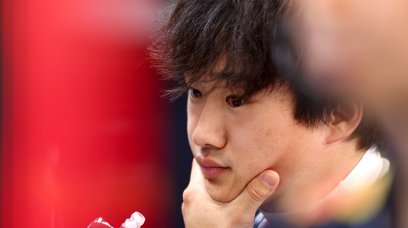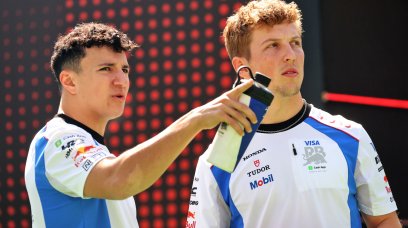The first race of the 2021 Formula 1 World Chamionship treated us all to a barnstorming, tense thriller of a spectacle. From start to finish, the result simply couldn't be predicted as the race ebbed and flowed back and forth between Red Bull and Mercedes. The disappointing aspect of the race is that it eventually was decided by a technicality, with an unusual occurance in that Max Verstappen had to cede position after gaining a 'lasting advantage' by running out wide at Turn 4 to pass Hamilton on Lap 53. It's opened up a huge can of worms, with the decisions taken by Race Control and the FIA considered questionable, at worst, and inconsistent, at best. Let me emphasise at this point, in case you think I'm devaluing Lewis Hamilton's victory or Max Verstappen's mighty drive, that these inconsistencies would be highlighted regardless of the drivers involved. The issues started prior to the race, when the FIA's Michael Masi sent out a steward's update to tell the drivers and teams that track limits at Turn 4 would be enforced in practice and qualifying. This would mean exceeding the limit would result in a deleted time, which Red Bull's Sergio Perez and McLaren's Daniel Ricciardo found out in Q2. For the race, however, track limits would only be enforced according to the Sporting Regulations. This meant drivers could not gain a 'lasting advantage' by running wide. However, perhaps being a little naive of giving drivers such leeway, this directive from Race Control proved too relaxed. Lewis Hamilton, in particular, utilised the exit of the corner almost every lap for the first half of the race. This helped his pace, as well as his tyre life due to reducing the angle of the corner. With Hamilton's pace ensuring Mercedes got the jump on Red Bull through the undercut, Red Bull questioned the tactic with Race Control. Realising that Hamilton was going against the spirit of what was intended, Masi told Mercedes to tell Lewis to stop. Of course, we all know what happened from there. Now both within the limits, Verstappen caught and passed Hamilton but had to cede position after running wide over the same bit of tarmac. As this was a 'lasting advantage', he had to give up the position. This is where the definition of 'lasting advantage' needs defining. If Hamilton even gained a tenth of a second per lap for each occasion he ran wide, does that accumulated time gain not count as a 'lasting advantage'? Since when is a faster laptime not regarded as an advantage? Earlier in the race, on Lap 21, Alpine's Esteban Ocon and AlphaTauri's Yuki Tsunoda had a great battle through the same sequence. Ocon ran out wide at the same corner after being pushed wide by Tsunoda, but kept his foot in to keep alongside into Turn 5 and take the position. Again, 'lasting advantage' comes into play. Ocon could not have completed the move without gaining the advantageous positioning he got by running out wide. Yet, there was no instruction from Race Control to cede the position, unlike for Verstappen later in the race. Michael Masi defended the decision after the race, saying the track limits had not changed over the course of the race distance . Maybe so, but the enforcement of them did. Otherwise, why was Hamilton told to stop running wide midway through the race? In a sport as precise and technical as Formula 1, there is simply no reason for a race to be held with something as definite as track limits being open to interpretation, or exploitation, by the teams. Mercedes and Hamilton exploited this vagueness to their benefit, and deserve credit for doing so - it's exactly what Formula 1 is all about. Red Bull and Verstappen, by contrast, were caught napping, and lost time over the race distance as a result. Had they been more ruthless about it, Verstappen may have caught Hamilton quicker at the end of the race and had more overtaking opportunities. Or perhaps, Hamilton might not have been able to perform the undercut quite as efficiently as he did. Masi needs to ensure that such vagueness is not possible during a Grand Prix, and impose more strict guidelines for corners as ambiguous as Turn 4. Similarly, the FIA should revisit the definition of 'lasting advantage' in the Sporting Regulations.
Most read







